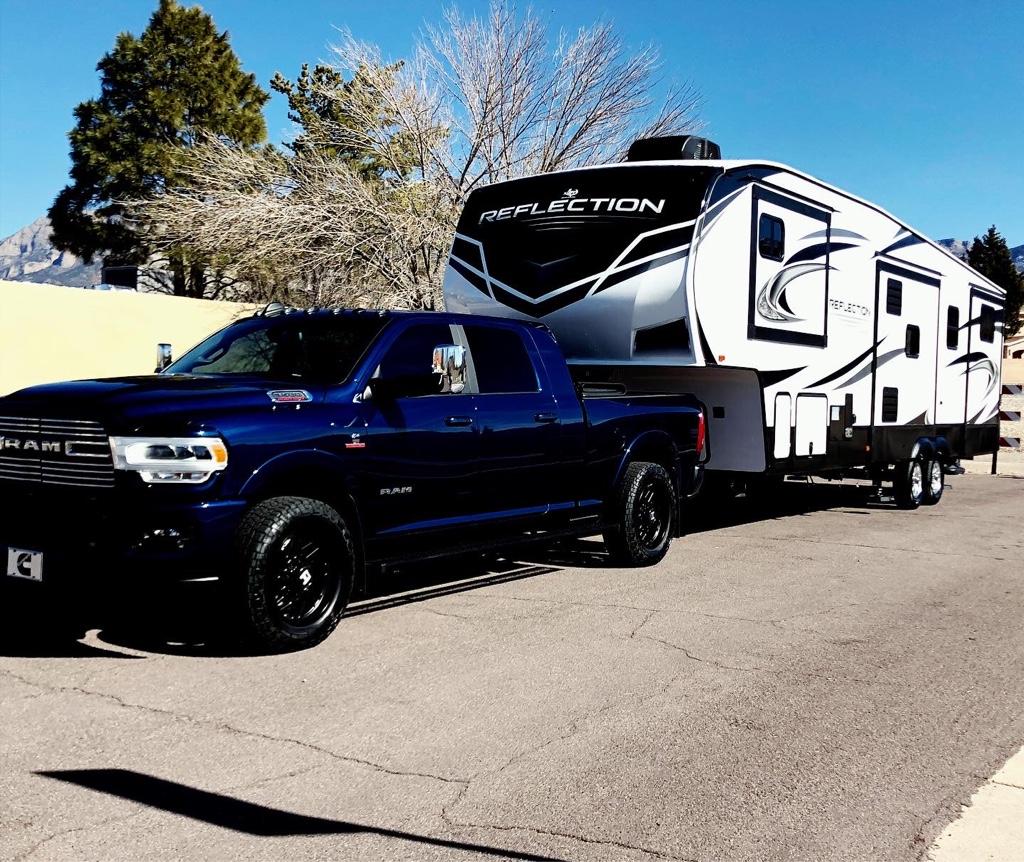The questions I would ask would be:
What does his trailer actually weigh, loaded for the trip?
What does he plan on having in the truck over the weight of the driver (max 200#)?
What does his hitch and safety chains weigh?
What is his rear axle maximum?
What is his payload (actual yellow sticker on door jamb) maximum?
What load range/max load capacity tires does he have on the truck?
Since there's none of that information given, everyone is guessing.
Maybe he has an ultralight 5th wheel with only 1 slide, and perhaps he doesn't take any fresh water with him (gets it at the campsite), nor does he have 2 big 40# tanks full of propane.
Perhaps it's just him and the petite missus, with next to no other gear.
Big difference from 3 slide unit and the family of 4 or 5 loaded for bear with full freshwater tanks and food for a week...
His 5'er could gvwr anywhere from 9500 - 15K.. But even taking an empty 5'er at 9500# with nothing in the truck and no passenger, that's over the (stated) trucks payload. Air bags level but don't add payload. Good hitches transfer a portion of the weight however everyone carries stuff with them so that evens out, or worse.
Can it be towed? Yes
Can it be stopped (on level dry roads), Yes,
How will the combo react to high winds, passing semi's or emergency lane maneuvers? Anyone's guess...
Do people do it all the time? Yes
Is it illegal? Not really, US LEO's don't enforce weight limits and some experts will say that GCVWR's are only "suggestions", not hard and fast maximums. (
PS - Insurance companies don't deny claims due to overweight truck/railer combinations, that's called operator "negligence" and that's what the liability portion of your policy is designed for. If there's no negligence on your part, then there's no payout to the other party. They also don't deny collision losses due to overweight or unsafe conditions (they'd love to but cannot).
Do most owners prefer a nice riding 1500? Yes
Do owners want the harsher ride when empty leaf springed 250/2500 or 350/3500? No
It's just the choices and gambles that people make. Now if you want to be more "prudent" then maybe follow established guidelines:
This from etrailer.com:
What Percent of a 5th Wheel Trailer King Pin Should be the Tongue Weight
Question:
I am purchasing a new 5th wheel trailer and concerned about the king pin weight. For every pound I put in the cargo bay located between the trailers axles and the king pin, what percent should of that pound would be added to the king pin?
asked by:
James F
Expert Reply:
A basic rule to go by is that the tongue weight of a 5th wheel trailer is about
20 percent of the gross trailer weight. (Some sites now say 25%)
*************************************
From another site (general article):
https://camperreport.com/average-weight-of-a-fifth-wheel-trailer-with-18-examples/
Mid-Profile Fifth Wheels
Weights of mid-profile fifth wheels will be 10,000 to 14,000 pounds with a length of 33’ to 41’. In choosing a mid-profile over a lightweight, the decision can be a matter of lifestyle needs, upgrades and floor plan. These fifth wheels may have more slides, Corian (hard surface) countertops, residential-sized refrigerators, upgraded furniture, crown molding, computer work stations, generous bunk rooms, king-sized bed, larger black/gray/fresh water tanks which, in the end, will add to a longer length and more weight than their lightweight cousins.
Examples:
- Keystone Montana 3720RL – 13,329 lbs., 39.7 ft.
- Heartland Pioneer – 11,010 lbs., 39.8 ft.
- Grand Design Reflection 337RLS – 10,570 lbs., 35.6 ft.
*************************************
YMMV, these discussions (to put it mildly) will never cease.












